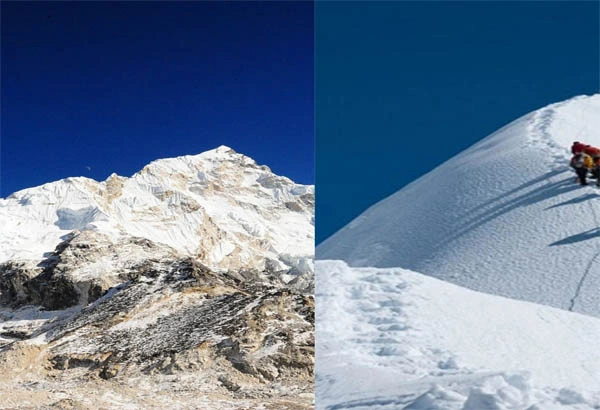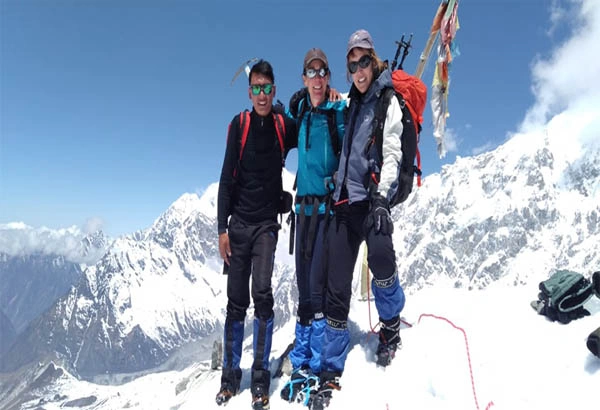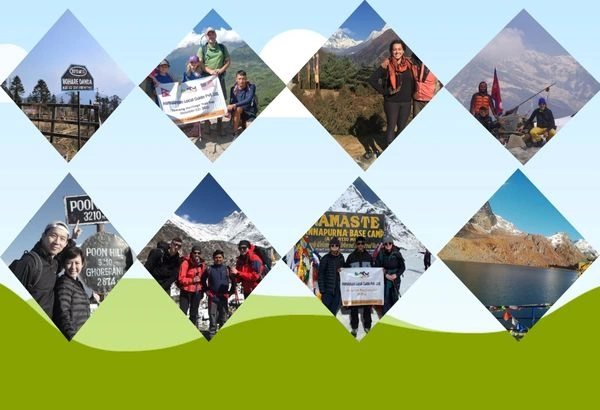How to prepare for the Annapurna Base Camp trek?
Annapurna Base Camp is situated in the northern part of central Nepal. It lies inside the ACAP (Annapurna Conservation Area Project) and takes you to 4130 meters/13549feet) at the part of the world's 10th highest mountain Mount. Annapurna I.
However, on the Annapurna Base camp trek, you must fly from your country to Nepal. Most main cities have flights connecting to Kathmandu Airport, the capital city of Nepal. After you arrive at Kathmandu Valley, you must travel to Pokhara, which is 2nd capital city of Nepal, and then drive to Nayapul.
The Kathmandu Valley is an interesting place to discover with its rich cultural heritage site and busy marketplaces. You can spend a couple of days here to get an experience of local culture and lifestyles.
Kathmandu to Pokhara, you will take a flight or, a tourist bus, which serves as the starting point for the ABC trek. In Pokhara city, you can enjoy the fresh environment, and beautiful Phewa Lake and take a spectacular view of the Annapurna Himalayas range before starting your journey. In this article, we will provide some tips to prepare for the ABC trekking.
Best time to Annapurna Base Camp Trek:
The best times for the Annapurna Base Camp trek are the spring season (March, April, and May) and Autumn Season (September, October and November). During this period, the weather is relatively stable, and the skies will be clear, offering stunning views of the white snow peaks. The spring season looks gorgeous with the blooming of rhododendrons flowers, like; red, white, and pink. It will be a more fun trip.
If you want to trek during the autumn season, you will get a chance to visit or enjoy a part in festivals as autumn is the festival's time in Nepal. Significant festivals that fall in the autumn seasons are Dashain, Tihar, and Chhat.
Though it is possible to trek in the winter season (December, January, and February), the cold and snow falls, can make the challenging, mainly in the high elevations. The summer season (June, July, and August) is generally avoided due to heavy rains, slippery trekking trails, and a high risk of landslides and floods.
Highlights OF ABC Trekking:
- Tourist center Pokhara.
- ABC (Annapurna Base Camp) 4130m.
- Sunrise and sunset views with Annapurna ranges including Mount. Annapurna I, Annapurna South, Hiuchuli, Gangapurna, Machhapuchhare from the Annapurna Base Camp.
- Flora and Fauna.
- Natural Hot spring at Jihnu Danda.
- Delightful villages and farmland at Chhumrung and Ghandruk Village.
Outline Annapurna Base Camp Trek Itinerary:
Day 01: Kathmandu to Pokhara by Tourist Bus (7 to 8 Hours' Drive).
Day 02: Drive from Pokhara to Nayapu (1 ½ hours' drive) and trek to Ghandruk Village 5/6 Hours walking.
Day 03: Ghandruk Village to Chhumrung Village (6 to 7 Hours walking).
Day 04: Chhumrung Village to Dovan Village (6 to 7 Hours walking).
Day 05: Dovan Village to Annapurna Base Camp (6 to 7 Hours walking).
Day 06: Annapurna Base Camp to return to Sinuwa Danda (5 to 6 Hours walking).
Day 07: Sinuwa Danda to Jihnu Danda (3 to 4 Hours walking).
Day 08: Jihnu Danda to Nayapul and drive back to Pokhara.
Trekking Expenditures:
The Annapurna Base Camp Trek Expenditures depend on the time frame, choice of accommodation, and your hiring guides and porters team. On average, you can expect to spend around 40 to 50 U$D Per day if you are trekking individually.
This trip cost includes basic accommodation, food, and permits. If you want to package tri then, be prepared to spend at least around 690 to 800U$D. The trip package normally covers all logistical arrangements, guide and porter salary, permits, and transportation. However, you will need some extra cost for excluded things, you must pay yourself.
Necessary Preparations:
Preparation for the trekking is key to guaranteeing a safe and pleasant experience. Physically, you must be in good figure, focusing on building your circulatory endurance and strength mostly in your legs. Regular trekking with a weighted backpack will assistance simulate the trek conditions?
Strength Exercise:
- Leg Power: Focus on training like crouches, lunges, and step-ups.
- Core Power: Include planks, crunches, and leg raises to shape core constancy.
- Stamina: Slowly grow the distance and duration of your treks to build stamina.
Cardiovascular fitness level:
- Aerobic exercises: Engross in running, cycling, swimming, or morning walking at least 2 to 3 hours a week.
- Hiking training: You can go long hikes with a backpack to simulate trekking surroundings.
Note: Mentally, you must be prepared for trekking and changing weather conditions, exploring the trip route, understanding the altitude, and knowing the signs of high altitude sickness are essentials for your safety.
How to mentally prepare for the trekking?
- Investigation of the trek: Read about the trip route, weather conditions, and challenges.
- Acclimatization: Understand the significance of acclimatization and design for rest days to prevent high altitude sickness.
- Stay positive: You can be mentally ready for Long days of walking and budding discomfort.
Trekking Gear Packing List:
You have to pack the essential gear for the Annapurna Base Camp Trek. You can take lightweight and moisture-wicking clothes hiking boats, a warm down jacket, Sleeping bag are among the fundamentals. Layering is important to staying comfortable as temperatures differ significantly throughout the day.
Trekking Gear Packing List:
You have to pack the essential gear for the Annapurna Base Camp Trek. You can take lightweight and moisture-wicking clothes hiking boats, a warm down jacket, sleeping bag are among the fundamentals. Layering is important to staying comfortable as temperatures differ significantly throughout the day.
Body Clothing: Sleeping Bag, Down Jacket, Three pairs of trekking t-shirts, sleeved shirts, Thermal Shirt for Colder place, Fleece Jacket, Warm wool Sweaters, Waterproof and windproof Jacket, Cotton Trekking pants with folding, Waterproof and windproof pants.
Head and Face: Sun Hat, Wool or fleece hat, Headlight, Sunglass, Sunscreen 50, and Face wipes, and towel.
List of Footwear: Trekking Boats, ¾ Paris Preferably Cotton Socks, Crampon, One pair extra Sport Shoes.
Necessary Gears: Gaiters just in case of snow, Gloves and Thick Gloves, Big rucksack above 40 L, Waterproof Bag Cover, Rain Coat, Trekking Pole (if you needed), Laundry Soap, Shampoo, Toothbrush, Toilet papers, Water peals, Bottle for drinking water, Pen and Note Book, Copy and Tourist Guide Book, Camera, Battery charger, Memory card, Cell Phone and Charger, Money Wallet, Altimeters and Playing card.
First aid Kid: Diamox, Cotton bandages, Paracetamol, Painkillers, Lipoamide to Control diarrhea (just in case), Water purified tablets, Lozenges, Elastic bandages, Thermometer Moleskin, and sling.




